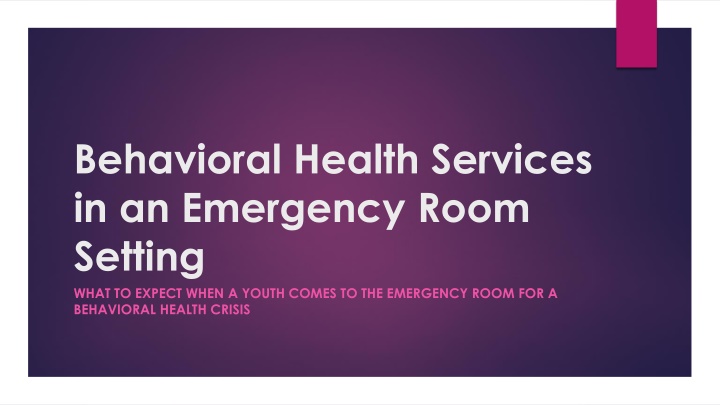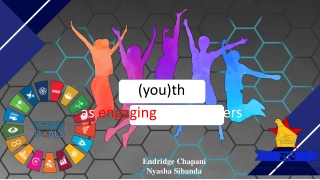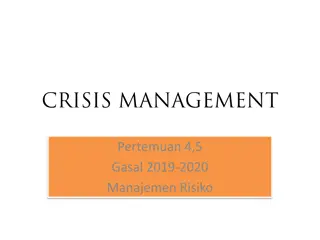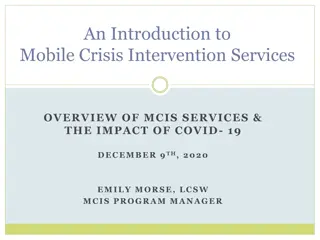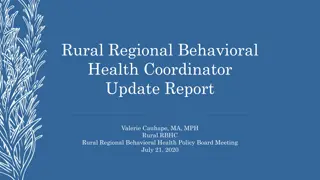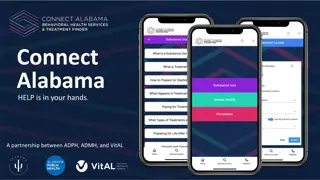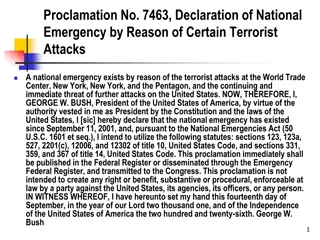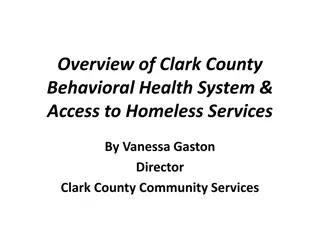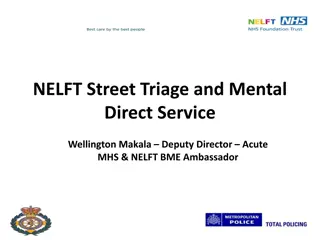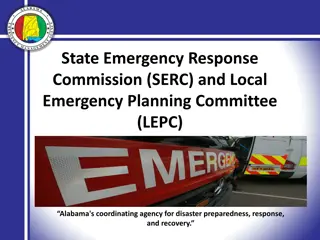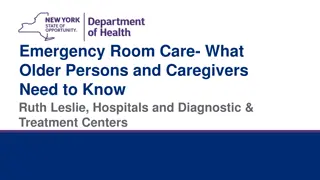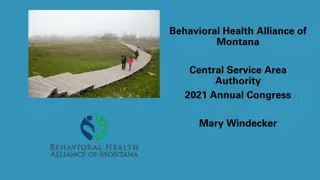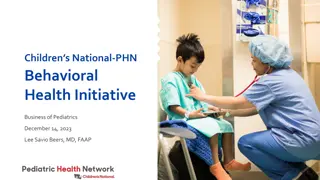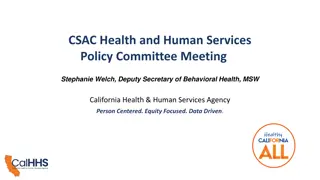Behavioral Health Services in Emergency Room: What to Expect for Youth Crisis
In an emergency room setting for behavioral health crises, youth undergo check-in, triage, medical clearance, mental health evaluation, discharge planning, and potential inpatient hospitalization. The process involves thorough assessments, collaboration with families, discharge planning for appropriate care options, and adhering to minor mental health laws.
Download Presentation

Please find below an Image/Link to download the presentation.
The content on the website is provided AS IS for your information and personal use only. It may not be sold, licensed, or shared on other websites without obtaining consent from the author.If you encounter any issues during the download, it is possible that the publisher has removed the file from their server.
You are allowed to download the files provided on this website for personal or commercial use, subject to the condition that they are used lawfully. All files are the property of their respective owners.
The content on the website is provided AS IS for your information and personal use only. It may not be sold, licensed, or shared on other websites without obtaining consent from the author.
E N D
Presentation Transcript
Behavioral Health Services in an Emergency Room Setting WHAT TO EXPECT WHEN A YOUTH COMES TO THE EMERGENCY ROOM FOR A BEHAVIORAL HEALTH CRISIS
Check-In, Triage & Medical Clearance Triage Patients are triage by a RN and roomed based on acuity and room availability Full Precautions Belongings Removed No Cell Phone Access Medical Clearance Assist in ruling out any medical reason to explain symptoms Physicians Complete Exam & may request additional testing
Mental Health Evaluation Mary Bridge is staffed with a licensed clinical social worker 24/7 The Social Worker will work collaboratively with the family to: Review behavioral health options for adolescents form with parents/caregiver Review available medical and behavioral health history Obtain Psycho social history both from the parent(s) and youth Contact collaterals as identified (counselors, teachers, etc) Complete Child and Adolescent Trauma Screen (CATS) Complete a comprehensive Mental Health Evaluation
Discharge Planning The mental health evaluation will assist in determining the most appropriate, least restrictive option for children and families in crisis. These plans can include: Safety Planning Referral to Outpatient Behavioral Health Treatment Referral to Behavioral Health Navigation (Case Management) Referral to Youth Mobile Crisis Services (CCS) Referral to Inpatient Behavioral Health Unit for short-term stabilization Care Coordination with Outpatient Team or Insurance Provider
Inpatient Hospitalization Inpatient hospitalization can be recommended when there is medical necessity and there are no least restrictive options that can reduce the risk. There are some pros/cons to inpatient hospitalizations There are limited inpatient beds across the state which can result in youth being transferred out of county. Patients are expected to transfer to the first available bed due to such limited bed capacity. Current inpatient facilities: Tacoma General Adolescent Behavioral Health Unit (Tacoma) Seattle Children's Hospital (Seattle) Fairfax (Kirkland) Smokey Point Behavioral Hospital (Marysville)
Important Minor Mental Health Laws Adolescent-Initiated Treatment An adolescent, 13 to 17 years old, may request an evaluation for outpatient or inpatient mental health or substance use disorder treatment without parental consent. For a minor under the age of 13, either parental consent or consent from an approved guardian is required Family Initiated Treatment (FIT) Parents may consent on behalf of adolescents who meet medical necessity. Consent of the adolescent is not required. Providers will have individual process and requirements for evaluation and admission to services. Adolescents can access both outpatient and inpatient treatment under Family Initiated Treatment Involuntary Treatment (RCW 71.34.700-798) If an adolescent 13 years or older presents a likelihood of serious harm to themselves or others, who is gravely disabled and may be in need of immediate mental health or substance use inpatient treatment and refuses to consent to a voluntary admission, the adolescent may be held for up to 12 hours to enable a DCR to evaluate the adolescent for possible involuntary commitment.
Information Sharing (RCW 70.02) Mental health providers are allowed to communicate some adolescents (age 13-17) treatment information to parents, if the provider believes that sharing this information would benefit the treatment process. Providers talk to adolescents about information they wish to disclosure and address any concerns the adolescent has about their disclosure of information. Examples of information that can be shared: Diagnosis and recommendations for treatment Treatment progress Recommended medications, their benefits and risk, side effects and dosage Crisis Prevention and Safety Planning Referrals for other services in the community Training and coaching for parents Note: If an adolescent is admitted for SUD evaluation and/or treatment, all protected health information (PHI) must be redacted, unless the adolescent provides written consent to the disclosure of the admission or SUD treatment information per federal law 42 CFR Part 2, or if and when federal law is changed.
